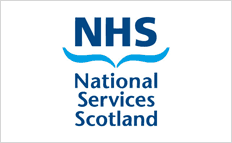Arsenic (As)
Arsenic is mainly measured to assess occupational exposure: eg. workers manufacturing semiconductors in the microelectronics industry (who are potentially exposed to arsine gas), agricultural workers using arsenical herbicides and pesticides, and workers exposed to wood preservatives containing copper, chromium, and arsenic.4
Exposure can be monitored by measuring urinary excretion of arsenic, which is present as arsenite (As3+) and arsenate (As5+) which are both highly toxic. When methylated to methylarsonic acid and dimethylarsinic acid their toxicity is substantially decreased. Arsenobetaine is a common species which is non-toxic and is present in the normal diet from fish and crustaceans. It can also be found in other food e.g. chicken. Another category of arsenic species, arsenosugars, which are present in some shellfish (e.g. oysters, mussels, clams) and in seaweed extract, break down in the body to give monomethylarsonic acid and dimethylarsinic acid. On finding a high urine arsenic concentration it is not possible to distinguish between exposure to toxic arsenic species and a diet containing substantial amounts of fish/seafood. Limiting dietary intake of all fish/seafood (including all products containing white fish) for five days before urine measurement can be used to investigate raised urine arsenic concentrations. Alternatively, if there is a high index of suspicion that exposure to a toxic form of arsenic has occurred, the patient has symptoms suggestive of arsenic toxicity or urine arsenic remains elevated despite dietary restriction of all fish/seafood then speciation of arsenic can be done.
Hair arsenic provides a more integrated measure of arsenic exposure, although this is also subject to external accumulation of arsenic from the environment.5
In some parts of the world (Bangladesh, Thailand, China) arsenic is found in levels up to 500 μg/L (WHO recommended limit = 0.05 μg/L) in drinking water taken from deep-bore wells. This has resulted in a large increase in cancer rates (especially skin cancer) and peripheral vascular disease causing gangrene.
Some non-Western traditional medicines may contain large quantities of arsenic and can be accessed over the internet, mainly from India.
Acute arsenic poisoning may result in abdominal pain, weakness and trembling. Longer-term poisoning may cause skin complaints and skin and liver cancer.6,7
Interpretation of raised urine arsenic results
We recommend following guidance developed with input from the SAS Trace Element group and the National Poisons Information Service (NPIS) when considering what action to take in response to a raised arsenic result. The full guidance can be found here. The following link from the guidance contains suggested action when a raised urine arsenic result is found in a non-occupationally exposed individual:
Further Information
Arsenic and You, Health and Safety Executive, Bootle, UK.
British Geological Survey on Arsenic in Groundwater.
Sample Requirements and Reference Ranges for Arsenic
| Sample Type | Hair, urine (random) |
|---|---|
| Container |
Urine: universal container A lock of hair, cut close to the scalp and about 2 or 3 mm thick is required. Hair should be collected into a sealable plastic bag ideally with the lock tied to maintain its integrity. It is easiest to tie the lock at the root end before it is cut. To assess recent exposure, a section of hair close to the cut end is analysed. If the suspected date of exposure is in the past please indicate on the request form the approximate date; we will then analyse the appropriate section of hair based on the mean growth rate of hair of around 10.6 mm/month. |
| Precautions | Urine: exclude all fish/seafood (including all products containing white fish) from diet for 5 days prior to sampling. |
| Minimum volume |
Urine: 1 mL* Hair: A bundle of hair about the length and half the thickness of a cocktail stick. |
| Reference ranges |
Urine arsenic: < 17 nmol/mmol creatinine88 Hair arsenic: < 0.5 µg/g 8 |
| Turnaround time | See this page for STEMDRL TAT targets |
| Method | Inductively coupled plasma mass spectrometry |
| Traceability |
Urine: Traceable to reference material produced in accordance with EN ISO 17511:2003 “In vitro diagnostic medical devices. Measurement of quantities in biological samples. Metrological traceability of values assigned to calibrators and control materials” and reference materials with values determined by reference laboratories. Hair: Traceable to certified reference material ERM DB001. |
| Intermediate Precision (CV) | See this page for latest data |
| Measurement Uncertainty, U | See this page for latest data |
| Analytical Goals (CV) | See this page for latest data |
| EQA Scheme |
Urine: UK NEQAS, Guildford (once per month) Hair: Quebec Multi-Element Quality Assessment Scheme (3 times per year) |
| Included in UKAS scope? | Urine and Hair: Yes |
* Absolute minimum volume; this volume is insufficient to carry out repeat analysis if analysis fails.

